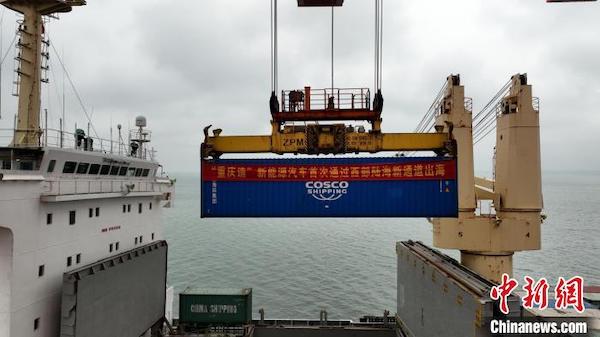Intl land-sea trade corridor boosts foreign trade

New energy vehicles made in Chongqing go abroad for the first time through the New International Land-Sea Trade Corridor. [Photo/China News Service]
More and more sets of automotive equipment and components from southwest China are nowadays being shipped from the Beibu Gulf Port in Guangxi to countries in the ASEAN and throughout Europe.
That's with the help of the New International Land-Sea Trade Corridor and the convenience of logistics channels such as sea-rail intermodal trains.
Since January 2023, new energy vehicles or NEVs can also be exported in full containers by sea-rail intermodal trains. This is more convenient and efficient than the traditional transportation of auto parts, as the whole vehicle in the container reduces the need for final assembly at the destination.
In the first quarter of 2023, the combined exports of electric vehicles, lithium-ion batteries and solar batteries surged by 66.9 percent, an increase of more than 100 billion yuan ($14.4 billion) year-on-year.
In 2023, the export volume of new energy vehicles and accessories is projected to reach more than 10,000 twenty-foot equivalent units (TEUs).
Furthermore, the export volume of photovoltaic products is expected to reach more than 20,000 TEUs, while the export volume of offshore wind power equipment is expected to reach more than 500,000 cubic meters.
In addition to the New International Land-Sea Trade Corridor being a national strategy, the growth of foreign trade is due to overlapping policy dividends such as the construction of the Beibu Gulf international gateway port, the implementation of the massive RCEP trade accord and export rebates.


